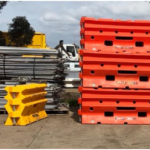A backlog is known as a place that has a list of important items, including the ones that are your priority and are to be implemented. These items can be features, epics, user tasks, or stories that are important and needed by the organization.
Our trainers provide you with an organized approach for making your task easy by aligning and maintaining the work items by SAFe Agilist Training.
Types of Backlogs
There are two types of backlogs, completely different from each other. Here we will know about the types of backlogs and why we need these two backlogs.
- Program Backlog
Program Backlog has enablers and features that need to be implemented to increase value in Program Increment. It consists of capabilities, PI objectives, and research work. Features present in the Program Backlog are a priority. Priority is on the basis of (WSJF) weighted shortest job first. The Kanban system manages the backlog. Before executing anything, a proper discussion and research are done with the customers, system architects, product owner, business owner to create the rest of the features. Product management is the one that can enter stories into the backlog.
- Team Backlog
Team Backlog has enablers and user stories for one team. It has any of the improvement stories that they suggested in the iteration retrospective. A Product Owner is the one that uses stories from the Program Backlog. During PI planning, the feature breakdown to the user story level happens. The team does poker planning for estimating the user stories. Here Fibonacci numbers add value to each user story. Either a scrum board or a Kanban manages the backlog. They use the according to which one is best suited for the team to attain clarity behavior-driven development used in user stories. Here all of the team members can add stories.
Three Primary Input Sources of Team Backlog
Although the backlog looks quite simple, there are a few critical concepts used.
Let us say, for example
If there is an item in the backlog, the team will surely complete it in time. But if no item is over, there is no work done. Permission is granted to each member to enter stories in the backlog. Only the Product Owner is present.
- Program backlog
- Team context
- Other stakeholders
Program backlog has new features that are to be sent by an ART. Team of ART with their backlog contain stories that support another team’s ARTs programs.
Apart from stories needed for fulfilling features, there is also a backlog of local stories that represent refactors, new functionality, research, technical debts, and defects. They’re prioritized and estimated in the same way as user stories.
Optimizing Value Delivery and System Health with Capacity Allocation
As ART (Agile Release Train), every Agile team goes through issues on how to make the balance of work that they are facing internally, as technical debt maintenance refactors.
Just shifting your focus to business might help for a short duration and add value to the market. But this might not work for a long duration due to increasing technical debt, which results in slow development. You can go for SAFe Agilist Certification.
When you try to balance different types of work, this complicates prioritizing one. As (PO) compares the value of unlike things like redesigns, defects, technology upgrades, new user stories, refactors, etc.
Teams apply capacity allocation just like Program Backlog. This is to tell what amount of total effort was made for each activity. Also, to make a balance in long-term product value and health delivery at PI percentage allocation can adjust.
Backlog Refinement
- There should always be some “always ready” stories that we can implement without any surprise or risk.
- We have a flow-based approach. This is to maintain a level of backlog readiness.
- Backlog refinement works by looking at upcoming stories to estimate, discuss and establish an understanding.
- Behavior-driven development, backlog teams apply this and use particular examples to clarify stories.
- Backlog refinement is a continuous process and not limited to a single event.
- Backlog refinement also helps in surface problems.
Conclusion
When you have a backlog, you need not worry about managing work in a more effective way.
With us, you can manage your backlog. This improves your progress which leads to extra work done. This also increases alignment towards reaching your goal and transparency.
There is no need to think about the work done. We make it our priority that whatever thing is in your backlog is complete. All you need to do is mention it in the backlog list.







